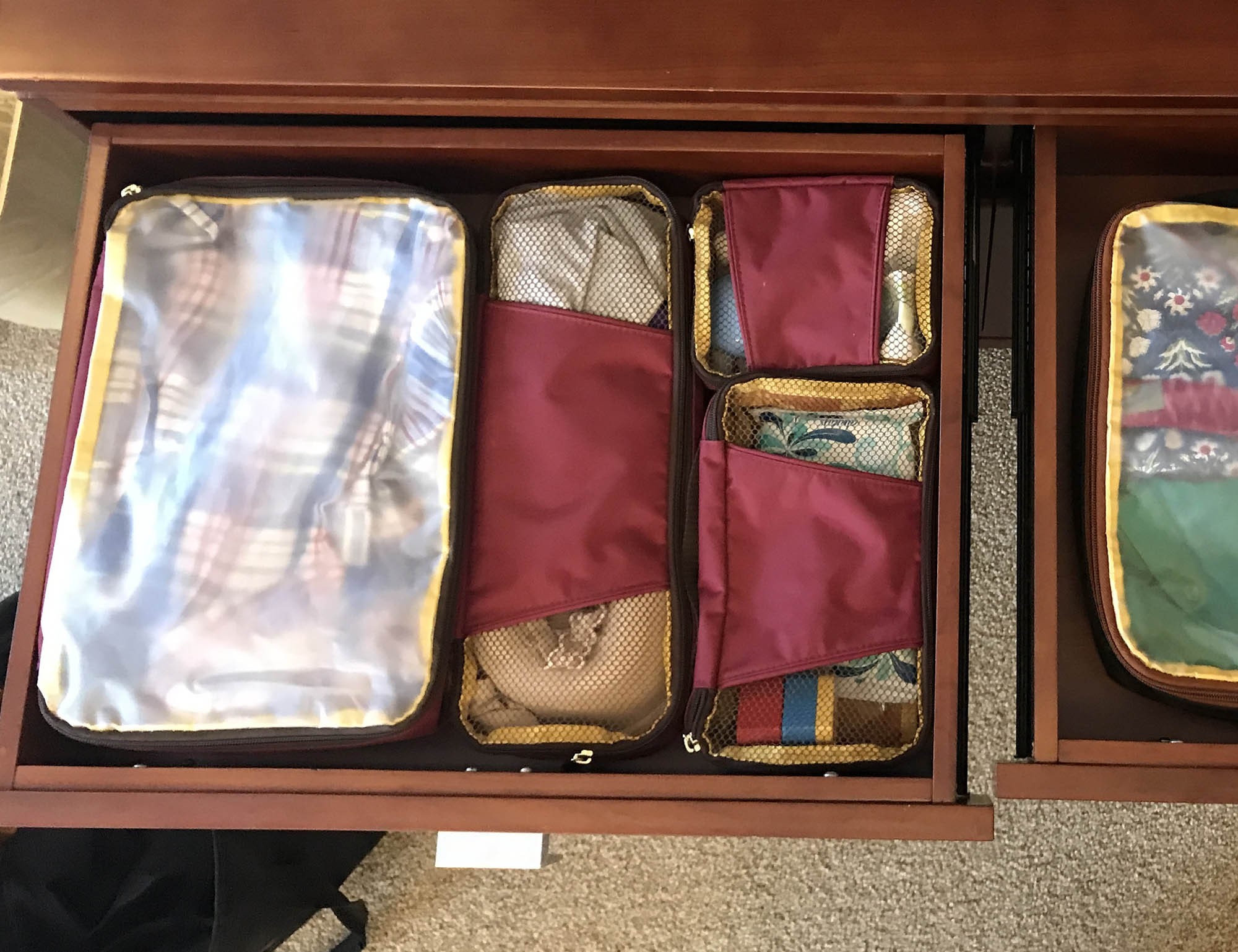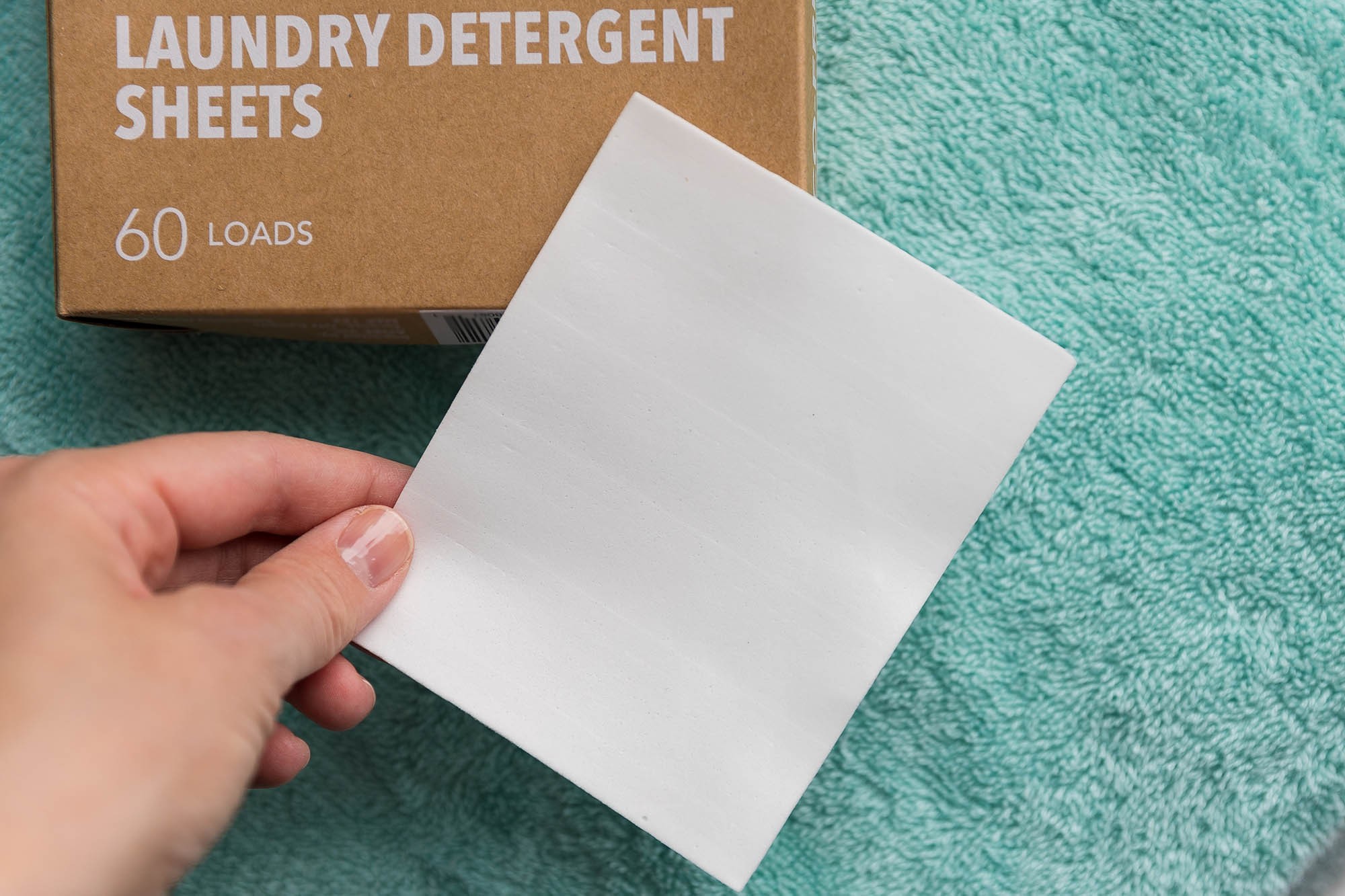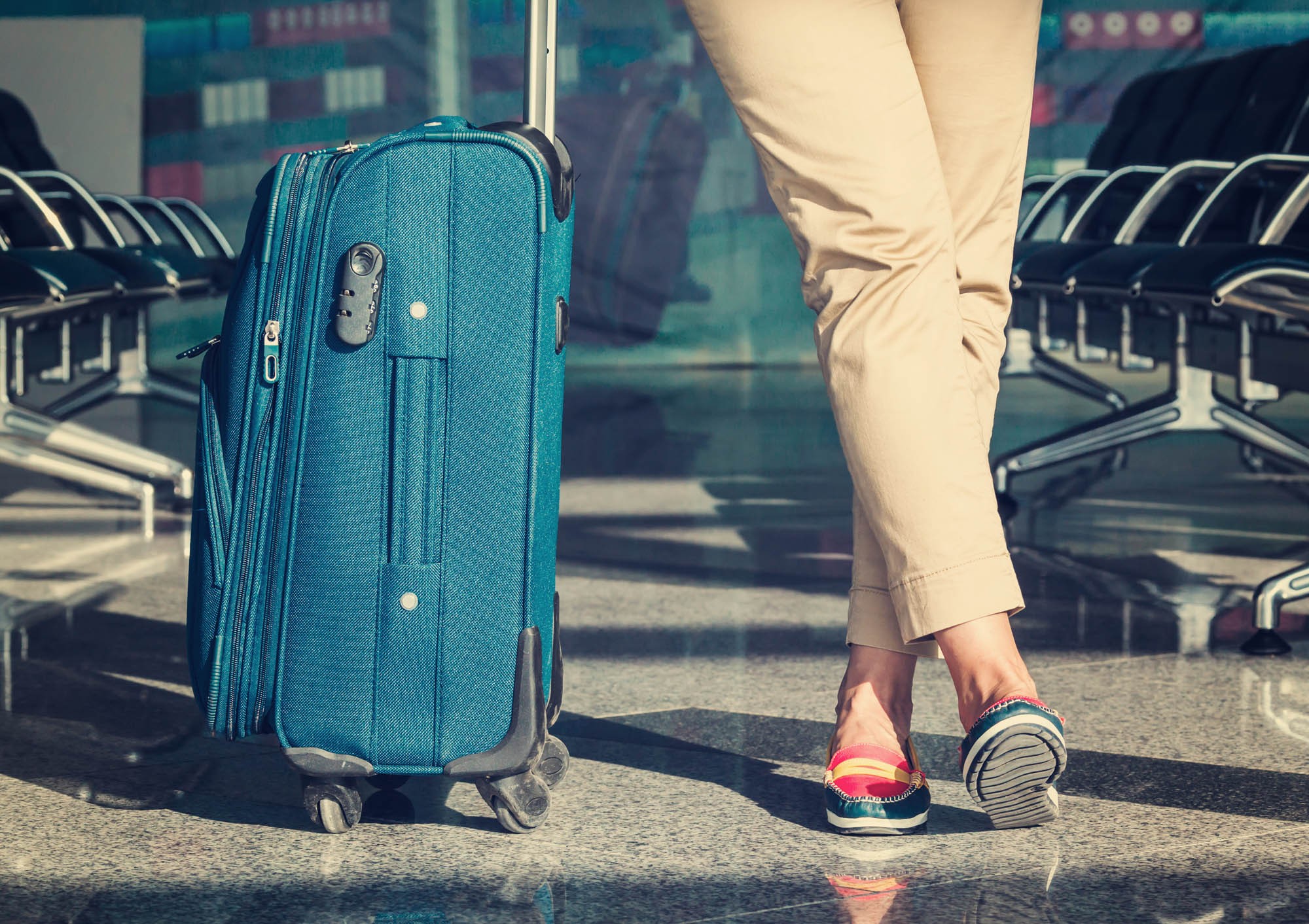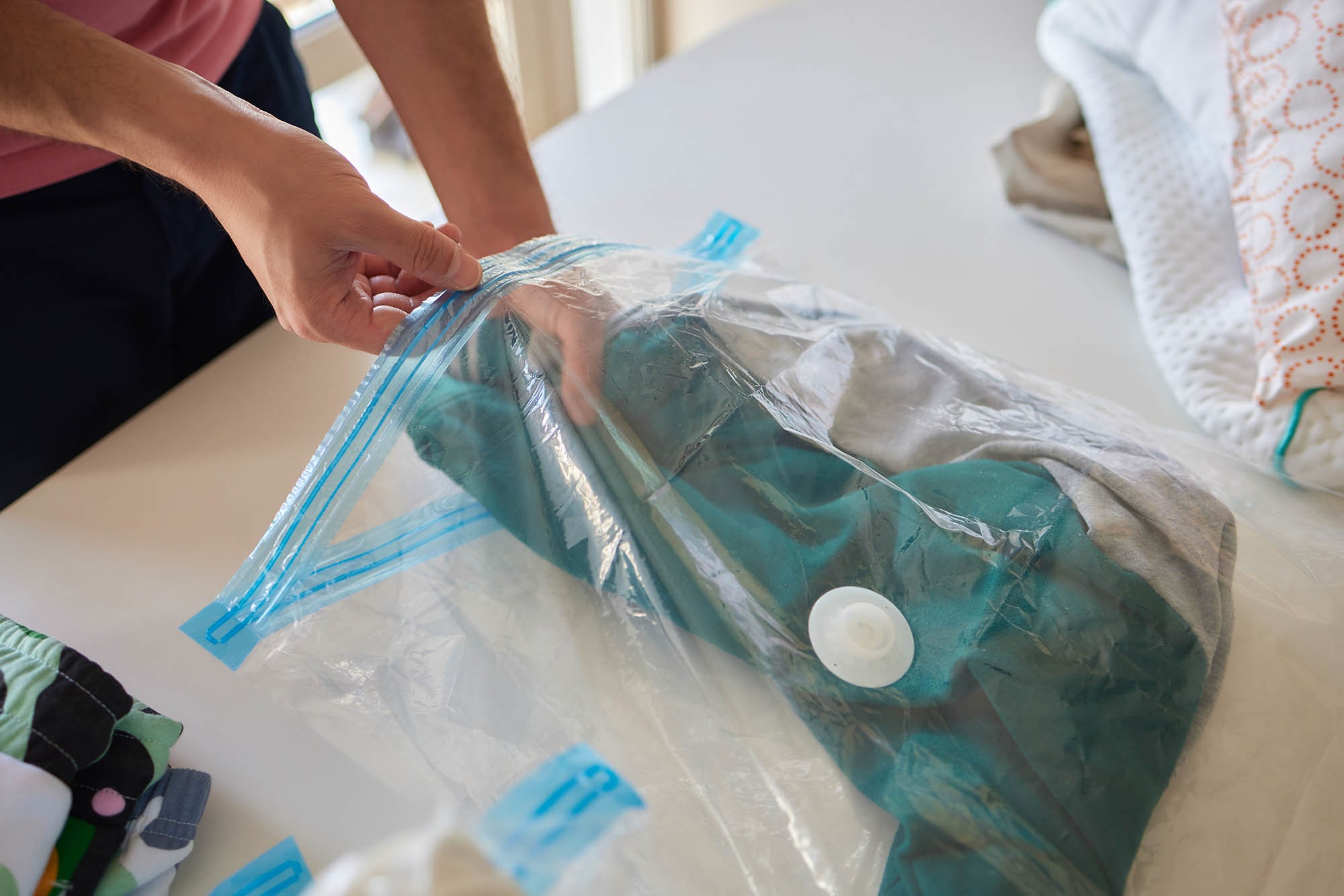Planning a trip to Vietnam? Wondering how much is a week’s worth tourism? SIXT.VN is here to help you plan your dream vacation without breaking the bank! Our comprehensive services offer solutions for every traveler, ensuring a memorable and affordable experience. Discover Vietnam affordably with us.
1. Decoding the Cost of a Week-Long Vietnamese Getaway
Figuring out how much is a week’s worth tourism in Vietnam can be exciting and overwhelming. Let’s break down the costs so you can plan the perfect trip.
Answer: On average, a week-long trip to Vietnam can cost anywhere from $300 to $1000 USD per person, depending on your travel style and preferences.
- Budget Travelers: If you’re backpacking, staying in hostels, eating local food, and using public transportation, you can comfortably explore Vietnam for about $300-$500 a week.
- Mid-Range Travelers: For those who prefer comfortable hotels, occasional taxis, and a mix of local and tourist restaurants, budget around $500-$700 a week.
- Luxury Travelers: If you want to indulge in luxury hotels, private tours, and fine dining, expect to spend $700-$1000 or more per week.
Let’s dive deeper into the specific costs you’ll encounter:
1.1. Flights: Your Ticket to Vietnam
Your international flights will likely be the most significant expense. Here are some tips:
- Book in Advance: According to research from Expedia, booking your flights at least three months in advance can save you up to 20%.
- Fly During the Off-Season: The shoulder months (April-May and September-October) offer pleasant weather and lower prices.
- Consider Budget Airlines: Look for deals from airlines like Vietjet Air or Bamboo Airways for domestic travel.
1.2. Accommodation: From Hostels to Hotels
Accommodation costs vary widely.
| Accommodation Type | Average Cost per Night (USD) |
|---|---|
| Hostel | $5 – $10 |
| Budget Hotel | $20 – $40 |
| Mid-Range Hotel | $40 – $80 |
| Luxury Hotel | $100+ |
1.3. Food: A Culinary Adventure
Vietnamese cuisine is delicious and affordable.
- Local Eateries: A bowl of pho or banh mi can cost as little as $1-$3.
- Restaurants: Expect to pay $5-$15 per person for a meal at a mid-range restaurant.
- Street Food: Don’t miss out on the street food scene! It’s safe, delicious, and incredibly cheap.
 Local Vietnamese dishes
Local Vietnamese dishes
1.4. Transportation: Getting Around
- Buses: The most economical way to travel long distances.
- Trains: A comfortable option for scenic routes like Hanoi to Sapa.
- Taxis & Ride-Sharing: Convenient for short distances, but negotiate the price beforehand or use apps like Grab.
1.5. Activities & Tours: Exploring Vietnam
- Free Activities: Many temples, parks, and markets are free to enter.
- Guided Tours: A day tour can range from $20 to $50 per person.
- Entrance Fees: Historical sites and museums usually charge a small fee of $1-$5.
1.6. Visas: Entry Requirements
Most tourists need a visa to enter Vietnam.
- E-Visa: The easiest option, costing around $25 and valid for 30 days.
- Visa on Arrival: Requires pre-approval and can be obtained at the airport.
1.7. Other Expenses: Don’t Forget These
- Travel Insurance: Essential for peace of mind, costing around $50-$100 for a week.
- Souvenirs: Set aside a budget for gifts and keepsakes.
- Tips: Tipping is not mandatory but appreciated for good service.
2. Planning Your Budget-Friendly Week in Vietnam
Ready to explore Vietnam without emptying your wallet? Here’s a detailed guide to help you plan a memorable and affordable week-long trip.
Answer: You can easily enjoy a fantastic week in Vietnam on a budget by making smart choices about accommodation, food, transportation, and activities.
2.1. Pre-Trip Planning
- Book Flights in Advance: According to a study by Kayak, booking international flights 2-3 months in advance can save you up to 27%.
- Travel During the Shoulder Season: April-May and September-October offer a sweet spot with good weather and fewer crowds.
- Get Travel Insurance: World Nomads or Allianz Global Assistance are reliable options. A basic plan for a week can cost around $50-$70.
2.2. Accommodation: Budget-Friendly Stays
- Hostels: Vietnam has many clean and social hostels. Dorm rooms usually cost $5-$10 per night.
- Budget Hotels/Guesthouses: Look for local guesthouses or small hotels. A private room can be found for $20-$30 per night.
- Airbnb: Consider Airbnb for longer stays. You can find affordable apartments or rooms in local neighborhoods.
2.3. Food: Eating Like a Local
- Street Food: Embrace street food! It’s safe, delicious, and incredibly cheap. A banh mi or bowl of pho costs around $1-$3.
- Local Eateries: Venture into small local restaurants where meals are typically $3-$5.
- Markets: Buy fresh fruits and snacks from local markets to save on costs.
2.4. Transportation: Getting Around Economically
- Buses: For long distances, opt for sleeper buses. They are affordable and save you a night’s accommodation. A trip from Hanoi to Hue can cost around $15-$20.
- Trains: Trains are a comfortable way to travel, especially for scenic routes like Hanoi to Sapa. Tickets can range from $20-$50.
- Local Buses: Within cities, use local buses. They are very cheap, with fares around $0.30-$0.50 per ride.
2.5. Activities: Free and Affordable Fun
- Free Walking Tours: Many cities offer free walking tours. Just tip the guide at the end if you enjoyed the tour.
- Temples and Pagodas: Most temples and pagodas have free or very low entrance fees ($1-$2).
- Parks and Lakes: Enjoy free activities like walking, jogging, or picnicking in local parks.
 Temple in Vietnam
Temple in Vietnam
2.6. Sample Budget Itinerary
Here’s a sample itinerary to give you an idea of how much is a week’s worth tourism in Vietnam on a budget:
Day 1: Hanoi
- Accommodation: Hostel ($8)
- Food: Street food ($10)
- Activities: Hoan Kiem Lake, Old Quarter (free)
- Transportation: Walking, local bus ($2)
- Total: $20
Day 2: Hanoi
- Accommodation: Hostel ($8)
- Food: Local eateries ($15)
- Activities: Temple of Literature ($1), Ho Chi Minh Mausoleum (free)
- Transportation: Local bus ($2)
- Total: $26
Day 3: Ha Long Bay
- Accommodation: Overnight cruise ($50)
- Food: Included in cruise
- Activities: Kayaking, swimming, cave exploration (included in cruise)
- Transportation: Transfer to/from Hanoi (included in cruise)
- Total: $50
Day 4: Ha Long Bay/Hanoi
- Accommodation: Hostel in Hanoi ($8)
- Food: Street food ($10)
- Activities: Ha Long Bay activities (included in cruise), return to Hanoi
- Transportation: Included in cruise, local bus ($2)
- Total: $20
Day 5: Hue
- Accommodation: Guesthouse ($20)
- Food: Local eateries ($15)
- Activities: Imperial City ($5)
- Transportation: Sleeper bus from Hanoi ($15), local transport ($2)
- Total: $57
Day 6: Hue
- Accommodation: Guesthouse ($20)
- Food: Local eateries ($15)
- Activities: Thien Mu Pagoda (free), Perfume River cruise ($5)
- Transportation: Local bus ($2)
- Total: $42
Day 7: Departure
- Accommodation: N/A
- Food: Airport meal ($10)
- Activities: Last-minute souvenir shopping
- Transportation: Taxi to airport ($10)
- Total: $20
Total Estimated Cost: $235
This itinerary is just an example. You can adjust it based on your interests and preferences.
3. Maximizing Your Tourism Dollars in Vietnam
To make the most of your trip, here are some practical tips to help you stretch your budget further while still enjoying an incredible experience.
Answer: You can maximize your tourism dollars in Vietnam by taking advantage of free activities, eating local food, using public transportation, and planning your itinerary carefully.
3.1. Accommodation Strategies
- Hostel Memberships: If you plan to stay in hostels, consider getting a membership card like Hostelworld or Hostelling International for discounts.
- Look for Deals: Use websites like Booking.com or Agoda to find deals and discounts on hotels and guesthouses.
- Consider Homestays: Staying with a local family can be a great way to experience Vietnamese culture and save money on accommodation.
3.2. Food Savings
- Cook Your Own Meals: If your accommodation has a kitchen, buy groceries from local markets and cook some of your meals.
- Happy Hour Deals: Many bars and restaurants offer happy hour deals on drinks and appetizers.
- Avoid Tourist Traps: Steer clear of restaurants in heavily touristed areas, as they tend to be more expensive.
3.3. Transportation Tips
- Walk Whenever Possible: Walking is a great way to explore cities and save on transportation costs.
- Rent a Bike: Renting a bicycle can be an affordable and fun way to get around.
- Negotiate Taxi Fares: Always negotiate the fare before getting into a taxi, or use a ride-sharing app like Grab.
3.4. Activity and Entertainment Savings
- Free Museums: Check if any museums offer free admission days or discounts for students or seniors.
- Local Festivals: Attend local festivals and events, which are often free and offer a glimpse into Vietnamese culture.
- Bargain at Markets: Bargain respectfully when shopping at markets to get the best prices.
3.5. Additional Money-Saving Tips
- Travel in a Group: Traveling with friends or family can help you save money on accommodation, transportation, and tours.
- Pack Light: Avoid checked baggage fees by packing light and using a carry-on.
- Use a Credit Card with No Foreign Transaction Fees: This can save you money on currency exchange fees.
4. Is Vietnam an Affordable Tourist Destination?
Vietnam is known for being a budget-friendly destination, but let’s examine why and how it compares to other popular travel spots.
Answer: Yes, Vietnam is generally considered an affordable tourist destination, offering excellent value for money compared to many Western countries and other popular destinations in Asia.
4.1. Cost Comparison
- Southeast Asia: Vietnam is often cheaper than Thailand, Singapore, and Malaysia. For example, a similar week-long trip in Thailand might cost 30-50% more.
- Europe: Compared to Western Europe, Vietnam is significantly more affordable. Accommodation, food, and transportation costs are much lower.
- North America: The cost of living and traveling in Vietnam is considerably lower than in the United States or Canada.
4.2. Factors Contributing to Affordability
- Low Cost of Living: Vietnam has a relatively low cost of living, which translates to lower prices for goods and services.
- Abundant Street Food: The availability of cheap and delicious street food helps keep food costs down.
- Affordable Accommodation: You can find a range of affordable accommodation options, from hostels to budget hotels.
- Efficient Public Transportation: Buses and trains are efficient and inexpensive, making it easy to get around the country.
4.3. Potential Extra Costs
- Visa Fees: Depending on your nationality, you may need to pay for a visa to enter Vietnam.
- Tourist Traps: Be aware of tourist traps, such as overpriced souvenirs or tours, and avoid them.
- Unexpected Expenses: Always factor in a buffer for unexpected expenses, such as medical emergencies or travel delays.
4.4. Long-Term vs. Short-Term Travel
- Long-Term Stays: If you plan to stay in Vietnam for an extended period, you can often negotiate lower rates for accommodation and other services.
- Short Trips: Even for short trips, careful planning and budgeting can help you make the most of your money.
4.5. Comparing to Other Destinations
To provide a clearer picture, here’s a table comparing the estimated weekly costs for budget, mid-range, and luxury travel in Vietnam versus other popular destinations:
| Destination | Budget (USD) | Mid-Range (USD) | Luxury (USD) |
|---|---|---|---|
| Vietnam | $300 – $500 | $500 – $700 | $700+ |
| Thailand | $400 – $600 | $600 – $900 | $900+ |
| Bali | $350 – $550 | $550 – $800 | $800+ |
| Spain | $500 – $800 | $800 – $1200 | $1200+ |
| United States | $700 – $1000 | $1000 – $1500 | $1500+ |
As the table illustrates, Vietnam offers competitive prices, especially for budget and mid-range travelers.
5. A Week in Vietnam: Sample Itineraries for Different Budgets
To give you a clearer picture of how much is a week’s worth tourism in Vietnam, let’s explore a few sample itineraries tailored to different budgets and interests.
Answer: With careful planning, you can craft a week-long itinerary in Vietnam that suits your budget, whether you’re a backpacker, a mid-range traveler, or seeking a luxurious experience.
5.1. Budget Backpacking Itinerary (Approx. $350 – $500)
This itinerary focuses on experiencing Vietnam’s highlights while keeping costs to a minimum.
- Day 1: Hanoi: Arrive in Hanoi, check into a hostel ($8-$10/night), explore the Old Quarter, enjoy street food (pho, banh mi).
- Day 2: Hanoi: Visit Hoan Kiem Lake, the Temple of Literature, and Ho Chi Minh Mausoleum (free or low-cost).
- Day 3: Ha Long Bay: Take a budget-friendly overnight cruise ($40-$60 including meals).
- Day 4: Ha Long Bay/Hanoi: Return to Hanoi in the afternoon, explore more of the city.
- Day 5: Sapa: Take an overnight bus or train to Sapa ($15-$25), trek through rice terraces.
- Day 6: Sapa: Explore local villages, enjoy the stunning mountain scenery.
- Day 7: Departure: Return to Hanoi for your departure flight.
5.2. Mid-Range Itinerary (Approx. $500 – $700)
This itinerary offers a balance of comfort and affordability, with better accommodation and a mix of local and tourist experiences.
- Day 1: Hanoi: Arrive in Hanoi, check into a mid-range hotel ($30-$50/night), explore the Old Quarter, enjoy a traditional Vietnamese dinner.
- Day 2: Hanoi: Visit Hoan Kiem Lake, the Temple of Literature, and take a cooking class ($30-$40).
- Day 3: Ha Long Bay: Take a 2-day/1-night cruise with a reputable company ($80-$120 including meals).
- Day 4: Ha Long Bay/Hanoi: Return to Hanoi, enjoy a water puppet show ($5-$10).
- Day 5: Hue: Fly from Hanoi to Hue ($40-$60), check into a hotel, explore the Citadel.
- Day 6: Hue: Visit the Thien Mu Pagoda, take a boat trip on the Perfume River.
- Day 7: Departure: Fly from Hue to your next destination or return home.
 Detergent sheets for travel
Detergent sheets for travel
5.3. Luxury Itinerary (Approx. $700+)
This itinerary caters to travelers seeking high-end experiences, with luxurious accommodation, private tours, and fine dining.
- Day 1: Hanoi: Arrive in Hanoi, check into a 5-star hotel ($150+/night), enjoy a gourmet meal at a top-rated restaurant.
- Day 2: Hanoi: Take a private city tour, visit historical sites, and enjoy a spa treatment.
- Day 3: Ha Long Bay: Fly to Ha Long Bay by seaplane, enjoy a luxurious overnight cruise ($200+ including gourmet meals).
- Day 4: Ha Long Bay/Hanoi: Return to Hanoi, enjoy a private shopping tour.
- Day 5: Hoi An: Fly from Hanoi to Da Nang ($80-$120), transfer to Hoi An, check into a luxury resort ($150+/night).
- Day 6: Hoi An: Explore the ancient town, get custom-made clothing, enjoy a cooking class.
- Day 7: Departure: Relax at the resort, enjoy a final gourmet meal before departing.
6. Vietnam’s Top Tourist Attractions and Their Costs
Knowing which attractions to visit and their associated costs can greatly assist in planning your trip. Here’s a guide to some of Vietnam’s top attractions and their average prices.
Answer: Vietnam boasts a wealth of attractions, from stunning natural landscapes to historical sites, and knowing their entrance fees and associated costs helps in budgeting your trip.
6.1. Northern Vietnam
- Hanoi:
- Hoan Kiem Lake: Free
- Temple of Literature: VND 30,000 (approx. $1.30)
- Ho Chi Minh Mausoleum: Free (but dress respectfully)
- Water Puppet Show: VND 100,000 – 200,000 (approx. $4.30 – $8.60)
- Ha Long Bay:
- Day Cruise: VND 800,000 – 1,500,000 (approx. $35 – $65)
- Overnight Cruise: VND 2,000,000 – 5,000,000 (approx. $86 – $215)
- Sapa:
- Trekking Tours: VND 300,000 – 800,000 per day (approx. $13 – $35)
- Fansipan Cable Car: VND 750,000 (approx. $32)
- Cat Cat Village: VND 70,000 (approx. $3)
6.2. Central Vietnam
- Hue:
- Imperial City: VND 150,000 (approx. $6.50)
- Tomb of Tu Duc: VND 100,000 (approx. $4.30)
- Thien Mu Pagoda: Free
- Hoi An:
- Hoi An Ancient Town: VND 120,000 (approx. $5.20) (covers entry to multiple sites)
- Japanese Covered Bridge: Included in Hoi An Ancient Town ticket
- My Son Sanctuary: VND 150,000 (approx. $6.50)
- Da Nang:
- Ba Na Hills: VND 750,000 (approx. $32)
- Marble Mountains: VND 40,000 (approx. $1.70)
- Dragon Bridge: Free (watch the fire and water show on weekends)
6.3. Southern Vietnam
- Ho Chi Minh City (Saigon):
- War Remnants Museum: VND 40,000 (approx. $1.70)
- Reunification Palace: VND 40,000 (approx. $1.70)
- Cu Chi Tunnels: VND 110,000 (approx. $4.70)
- Mekong Delta:
- Day Tour: VND 500,000 – 1,000,000 (approx. $22 – $43)
- Phu Quoc Island:
- Beaches: Free
- VinWonders Phu Quoc: VND 800,000 (approx. $35)
- Phu Quoc National Park: Free
6.4. Other Potential Expenses
- Transportation: Consider costs for taxis, buses, and domestic flights.
- Food: Budget for street food, local restaurants, and fine dining experiences.
- Accommodation: Plan for hostels, hotels, or resorts depending on your budget.
- Souvenirs: Set aside money for gifts and keepsakes.
7. The Impact of Travel Style on Your Vietnam Trip Cost
Your travel style significantly influences how much is a week’s worth tourism in Vietnam. Are you a budget backpacker, a mid-range explorer, or a luxury seeker?
Answer: Your travel style is a primary factor in determining the cost of your Vietnam trip, as it affects your choices in accommodation, dining, transportation, and activities.
7.1. Backpacking (Budget)
- Accommodation: Hostels, dorm rooms ($5-$10/night)
- Food: Street food, local eateries ($10-$15/day)
- Transportation: Buses, trains, local transport ($5-$10/day)
- Activities: Free attractions, low-cost tours ($5-$10/day)
- Daily Budget: $25-$45
- Weekly Budget: $175-$315
7.2. Mid-Range (Comfortable)
- Accommodation: Budget hotels, guesthouses ($20-$40/night)
- Food: Mix of local and tourist restaurants ($20-$30/day)
- Transportation: Taxis, buses, occasional domestic flights ($10-$20/day)
- Activities: Guided tours, entrance fees ($15-$30/day)
- Daily Budget: $65-$120
- Weekly Budget: $455-$840
 Carry-on shoes
Carry-on shoes
7.3. Luxury (High-End)
- Accommodation: Luxury hotels, resorts ($100+/night)
- Food: Fine dining, gourmet experiences ($50+/day)
- Transportation: Private cars, domestic flights ($30+/day)
- Activities: Private tours, exclusive experiences ($50+/day)
- Daily Budget: $200+
- Weekly Budget: $1400+
7.4. Key Cost Drivers
- Accommodation: Luxury hotels can significantly increase your costs.
- Transportation: Domestic flights and private cars are more expensive than buses or trains.
- Activities: Private tours and exclusive experiences come at a premium.
- Food: Fine dining can add considerably to your daily expenses.
7.5. Adjusting Your Budget
- Mix and Match: Combine elements of different travel styles to create a personalized budget.
- Prioritize Experiences: Focus on activities and experiences that are most important to you.
- Look for Deals: Take advantage of discounts and promotions to save money.
8. Seasonal Price Fluctuations and the Best Time to Visit Vietnam
Understanding when to visit Vietnam can impact how much is a week’s worth tourism. Prices and weather vary significantly throughout the year.
Answer: Seasonal price fluctuations affect the cost of your Vietnam trip, with peak seasons seeing higher prices for flights and accommodation. The best time to visit depends on the region and your weather preferences.
8.1. Peak Season (November to March)
- Weather: Cooler temperatures in the north, dry season in the south.
- Prices: Higher prices for flights, accommodation, and tours.
- Crowds: More tourists, especially during holidays like Christmas and Tet (Lunar New Year).
- Considerations: Book in advance, be prepared for crowds, and budget accordingly.
8.2. Shoulder Season (April to May, September to October)
- Weather: Pleasant temperatures in most regions, fewer crowds.
- Prices: Moderate prices for flights and accommodation.
- Crowds: Fewer tourists, making it easier to explore popular attractions.
- Considerations: A good balance of weather, prices, and crowds.
8.3. Low Season (June to August)
- Weather: Hot and humid, with occasional rain.
- Prices: Lower prices for flights and accommodation.
- Crowds: Fewer tourists, offering a more authentic experience.
- Considerations: Be prepared for hot and humid weather, pack accordingly, and take advantage of lower prices.
8.4. Regional Variations
- Northern Vietnam: Best visited from September to November or March to May.
- Central Vietnam: Best visited from February to May.
- Southern Vietnam: Best visited from November to April.
8.5. Impact on Budget
- Flights: Prices can vary significantly depending on the season.
- Accommodation: Hotels and resorts often offer lower rates during the low season.
- Tours: Some tours may be cheaper or offer discounts during the off-season.
9. Tips for Saving Money on Accommodation in Vietnam
Finding affordable accommodation is key to answering how much is a week’s worth tourism in Vietnam. Here are some proven strategies.
Answer: Saving money on accommodation in Vietnam involves choosing budget-friendly options, booking in advance, and considering alternative lodging like hostels, homestays, and Airbnb.
9.1. Hostels
- Pros: Cheapest option, social atmosphere, great for solo travelers.
- Cons: Shared rooms, limited privacy.
- Cost: $5-$10/night.
9.2. Budget Hotels and Guesthouses
- Pros: Private rooms, affordable, basic amenities.
- Cons: May lack some comforts, limited services.
- Cost: $20-$40/night.
9.3. Homestays
- Pros: Immersive cultural experience, local hospitality, often includes meals.
- Cons: May have limited privacy, language barriers.
- Cost: $15-$30/night.
9.4. Airbnb
- Pros: Variety of options, apartments, houses, often with kitchens.
- Cons: Can be inconsistent, read reviews carefully.
- Cost: $20-$50/night.
 Compression bags for travel
Compression bags for travel
9.5. Booking Strategies
- Book in Advance: Especially during peak season, book your accommodation well in advance.
- Use Comparison Websites: Compare prices on sites like Booking.com, Agoda, and Hotels.com.
- Look for Deals: Take advantage of discounts, promotions, and loyalty programs.
- Consider Location: Stay slightly outside the city center for lower prices.
9.6. Long-Term Stays
- Negotiate Rates: If you plan to stay for a week or longer, negotiate a lower rate with the hotel or guesthouse.
- Apartment Rentals: Consider renting an apartment for longer stays.
- Work Exchanges: Explore work exchange opportunities for free accommodation.
10. Cutting Costs on Food and Drink During Your Vietnam Trip
Food is a highlight of any trip to Vietnam, but costs can add up. Here’s how to savor the flavors while saving money.
Answer: You can significantly cut costs on food and drink in Vietnam by embracing street food, eating at local eateries, shopping at markets, and avoiding tourist traps.
10.1. Street Food
- Pros: Authentic, delicious, incredibly cheap.
- Cons: Hygiene concerns (choose reputable vendors).
- Cost: $1-$3 per meal.
10.2. Local Eateries (Quan An)
- Pros: Affordable, delicious, authentic Vietnamese cuisine.
- Cons: May lack English menus, can be crowded.
- Cost: $3-$5 per meal.
10.3. Markets
- Pros: Fresh produce, snacks, cheap prices.
- Cons: Bargaining required, can be overwhelming.
- Cost: Varies.
10.4. Cooking Your Own Meals
- Pros: Saves money, control over ingredients.
- Cons: Requires access to a kitchen, time-consuming.
- Cost: Varies.
10.5. Avoiding Tourist Traps
- Pros: Saves money, more authentic experience.
- Cons: Requires research, may miss some popular spots.
- Cost: Varies.
10.6. Drink Strategies
- Drink Local Beer (Bia Hoi): Inexpensive and refreshing.
- Avoid Imported Drinks: Stick to local brands.
- Carry a Water Bottle: Refill at your accommodation or buy large bottles of water.
10.7. Additional Tips
- Happy Hour Deals: Take advantage of happy hour deals on drinks and appetizers.
- Lunch Specials: Many restaurants offer lunch specials at discounted prices.
- Pack Snacks: Bring snacks from home or buy them at local markets.
SIXT.VN understands the importance of budget-friendly travel. We offer a range of services, including affordable airport transfers, hotel bookings, and tours, to help you make the most of your Vietnam adventure. Contact us today to start planning your dream trip!
Address: 260 Cau Giay, Hanoi, Vietnam
Hotline/Whatsapp: +84 986 244 358
Website: SIXT.VN
FAQ: Your Questions About a Week in Vietnam Answered
1. How much cash should I bring for a week in Vietnam?
It depends on your spending habits, but $300-$500 USD should be sufficient for a budget traveler. Credit cards are accepted in larger establishments, but cash is essential for smaller businesses and markets.
2. Is it safe to drink tap water in Vietnam?
No, it’s not recommended. Stick to bottled water or use a water filter.
3. What should I pack for a week in Vietnam?
Lightweight clothing, comfortable shoes, insect repellent, sunscreen, a hat, and a universal adapter.
4. What are some must-try dishes in Vietnam?
Pho, banh mi, bun cha, and fresh spring rolls.
5. Do I need travel insurance for Vietnam?
Yes, it’s highly recommended to protect yourself against unforeseen events.
6. What is the local currency in Vietnam?
Vietnamese Dong (VND).
7. How do I get a visa for Vietnam?
You can apply for an e-visa online or obtain a visa on arrival.
8. Is it easy to travel around Vietnam?
Yes, with various options like buses, trains, and domestic flights.
9. What are the best souvenirs to buy in Vietnam?
Silk products, lacquerware, coffee, and conical hats.
10. What are some cultural etiquette tips for Vietnam?
Dress modestly when visiting temples, avoid public displays of affection, and be respectful of elders.



